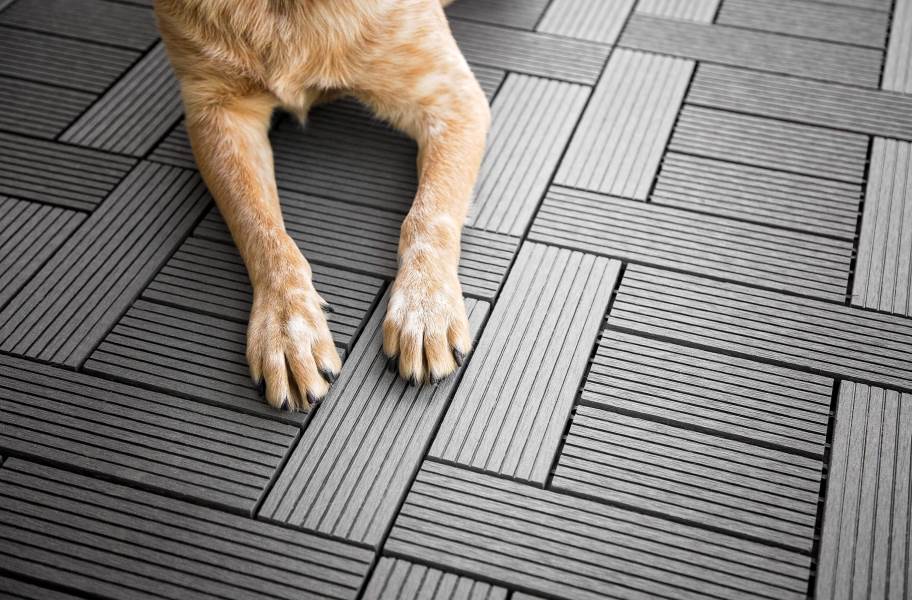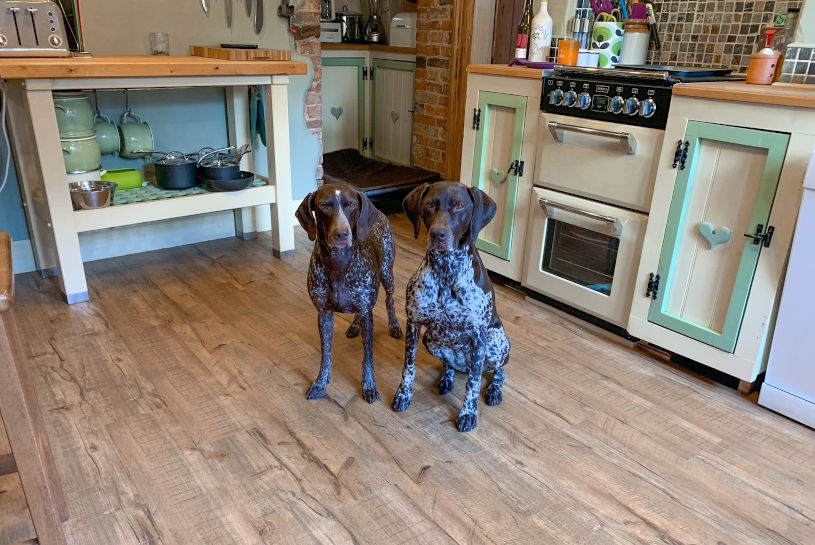Picture this: you’ve just finished cleaning your gleaming hardwood floors, only to have your playful puppy come barreling in, muddy paws leaving streaks across the once-pristine surface. Sound familiar? Choosing the right flooring for your home, especially when you share it with pets, is a crucial decision that impacts both your sanity and your furry friend’s comfort. From the scratching of claws to the occasional accidents, pet owners face unique challenges when it comes to flooring.

Image: outdoorlifezone.com
This comprehensive guide aims to navigate the ever-growing world of pet-friendly flooring options, analyzing the pros and cons of each material and offering practical tips for choosing the best surface for your four-legged companions. Whether you’re a new pet parent or a seasoned veteran, understanding the properties of different flooring materials can help you create a home that’s both stylish and pet-proof.
Resilient and Durable: The Top Contenders
1. Hardwood: An Elegant Choice with a Bite
Hardwood flooring exudes classic charm and elegance, bringing a touch of sophistication to any home. However, its appeal is not without drawbacks when it comes to pets. The susceptibility of hardwood to scratches from claws, especially from larger breeds or energetic pups, is a common concern. While certain hardwoods like maple and hickory offer greater resistance to scratches, regular maintenance remains crucial. This includes keeping nails trimmed, using furniture protectors, and employing protective finishes that can help lessen the impact of claw marks.
Pros:
- Adds elegance and value to a home
- Easy to clean and maintain with regular sweeping and mopping
- Durable and long-lasting with proper care
Cons:
- Susceptible to scratches from pet claws, especially softer wood types
- Can be cold and uncomfortable for pets, especially in colder climates
- Slippery and can be hazardous, especially for older pets or those with mobility issues
2. Tile: A Low-Maintenance Champion
Tile, with its wide variety of styles and colors, offers a versatile option for pet owners seeking durability and easy maintenance. From ceramic to porcelain, tile is highly resistant to scratches, spills, and stains, making it a practical choice for homes with pets. Its water-resistant properties are a huge plus, especially when dealing with accidents or muddy paws. However, tile can be cold and hard on paws, potentially leading to discomfort for your pets, particularly in cooler climates.
Pros:
- Extremely durable and scratch-resistant
- Easy to clean and maintain with regular sweeping and mopping
- Water-resistant and stain-proof
Cons:
- Can be cold and uncomfortable for pets
- Slippery and can be hazardous for pets, especially on wet surfaces
- Can be noisy and echo, potentially disturbing pets and homeowners

Image: www.floorsforpaws.com
3. Laminate: A Budget-Friendly Option
Laminate flooring has gained significant popularity due to its affordability and ability to mimic the look of natural materials like wood and stone. It’s often a top choice for pet owners seeking a durable and budget-friendly solution. Laminate is water-resistant, scratch-resistant, and comes in a variety of finishes. However, its durability does have limits. While it can handle normal wear and tear, severe scratches or excessive moisture can damage the surface.
Pros:
- Affordable and readily available
- Durable and scratch-resistant
- Water-resistant and easy to clean
Cons:
- Not as durable as hardwood or tile
- Can be difficult to install and requires professional help
- Less forgiving to scratches and dents compared to other options
4. Luxury Vinyl Plank (LVP): The Versatile Choice
Luxury vinyl plank (LVP) flooring emerges as a popular contender due to its versatility, durability, and water-resistance. LVP replicates the appearance of natural materials like wood, stone, or tile, offering a wide range of design options. Its resilient core makes it scratch-resistant and dent-proof, a significant advantage in homes with active pets. This flooring is also waterproof, simplifying cleanup after pet accidents. However, LVP can sometimes be more expensive than other options like laminate and can be susceptible to scratches if improperly maintained.
Pros:
- Mimics the look of various materials like wood, stone, and tile
- Durable and scratch-resistant
- Waterproof and easy to clean
- Comfortable underfoot for pets
Cons:
- Can be more expensive than laminate or tile
- May show scratches or dents with prolonged exposure to sharp objects
- May be difficult to repair if damaged
5. Bamboo: A Sustainable and Stylish Choice
Bamboo flooring offers a sustainable and stylish alternative to traditional hardwood flooring. Its natural beauty and durability make it a desirable option for pet owners seeking environmentally responsible choices. Bamboo is inherently resistant to scratching and can handle the wear and tear associated with pets. However, its resistance to moisture can be a concern, especially in areas prone to spills or accidents.
Pros:
- Sustainable and renewable resource
- Durable and resistant to scratches
- Adds a natural and sophisticated look to a home
Cons:
- Less water-resistant than other flooring options
- Can be susceptible to damage from moisture and spills
- May be more expensive than other flooring options
Beyond Flooring: Enhance Your Pet-Friendly Home
While choosing the right flooring is crucial, it’s only one aspect of creating a truly pet-friendly home. Here are some additional tips to ensure comfort and safety for your furry companions:
- Consider Rugs: Rugs provide cushioning and warmth, making them ideal for pets who spend time on the floor. Choose rugs with a durable and stain-resistant material for easy cleanup. (Remember to secure rugs with non-slip backing to prevent slipping incidents)
- Embrace the Power of Rubber Mats: Place rubber mats in high-traffic areas, creating a safe and slip-resistant surface, especially for pets with joint issues or older animals.
- Invest in Paw Protection: Consider paw balm or booties, especially during winter or when navigating abrasive surfaces like tile or concrete. While initially met with some resistance from pets, paw protection can prevent dryness, cracking, and injuries.
- Keep Up with Cleaning Routine: A consistent cleaning routine is essential for maintaining a healthy and hygienic environment for your pets. Regularly vacuum and mop your floors to remove dirt, allergens, and pet hair. (When choosing cleaning products, always opt for pet-safe options that are non-toxic and biodegradable.)
Best Flooring For Pets In A Home
https://youtube.com/watch?v=KZYju8vojCY
Conclusion: Creating a Home for Both You and Your Pets
Choosing the best flooring for your pets is a balancing act between style, durability, and practicality. By carefully considering your pets’ needs and lifestyle, you can find the perfect surface for your home. From the resilience of tile to the warmth of rugs, options abound to create a space that’s both comfortable for your furry friends and visually appealing for you. Remember, creating a pet-friendly living environment is an investment in your shared happiness and well-being. So, start exploring your options, embrace the joy of your pet companions, and enjoy a loving and comfortable living space for years to come.





